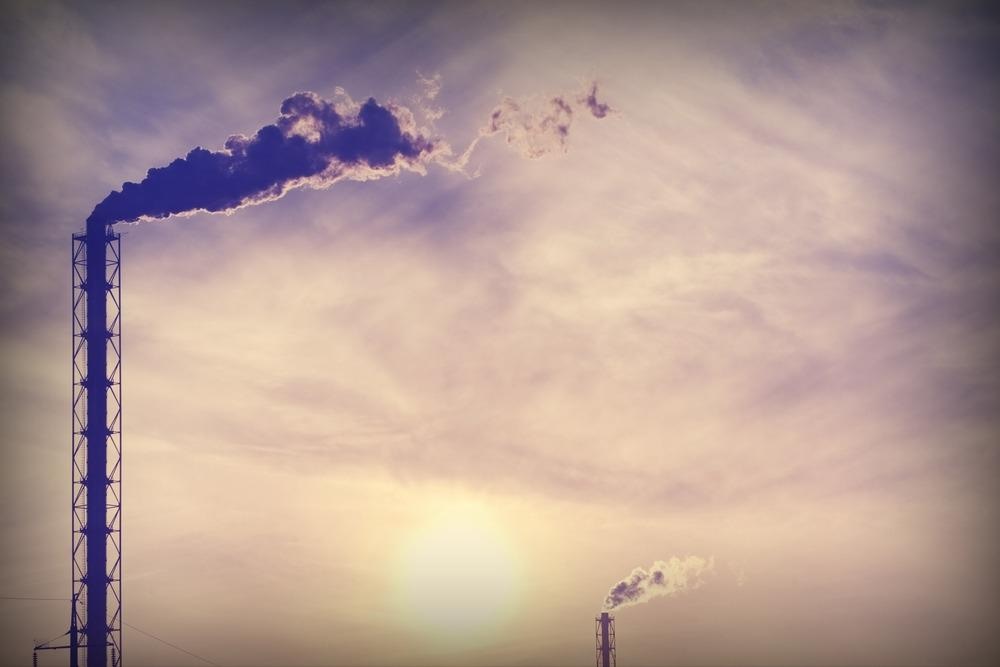Asia-Pacific (APAC) lies by the western Pacific Ocean, including East Asia, Oceania, the Russian Far East, South Asia, and Southeast Asia. Southeast Asia is one of the regions of the world where energy demand has been growing the fastest, at an average of 6 percent each year, being second to China, according to Eco-business. Meanwhile, political and financial struggles have resulted in stunted growth of renewables to keep up with these soaring energy needs. Since 2000, fossil fuels have continued to contribute nearly 90 percent of the required energy.

Image Credit: Svetlana Turchenick/Shutterstock.com
Benefits of Carbon Capture and Storage
Carbon capture, utilization and storage (CCUS) is a type of negative emissions technology (NET) since it extracts CO2 from the atmosphere and stores it.
There are two main types: biomass energy with CCS (BECCS), which is based on photosynthesis, and direct air CO2 capture and storage (DACCS).
These technologies will play a big role when working to meet global net-zero goals. Even with current plans for reducing emissions in the industry such as for operational emissions during heavy manufacturing or the production of petroleum, some emissions will still enter the atmosphere. Therefore, NETs will be needed to make up for the emissions extracted into the atmosphere, so that net-zero may be realized in Asia-Pacific.
CCUS technologies will play a particularly important role in supporting clean energy transitions in Southeast Asia.
According to the International Energy Agency (IEA):
CCUS can address emissions from the region’s existing power and industrial assets while underpinning new economic opportunities associated with the production of low-carbon hydrogen and ammonia. Regional co-operation on the development of CO2 transport and storage infrastructure can enable faster and more efficient deployment of CCUS.
At the same time, more efforts are needed to identify and develop CO2 storage resources in the region, whether onshore or offshore. A 2021 report by the Global CCS Institute reveal key insights across the Asia-Pacific, as summarized below.
Japan
Japan is a major CCS driver with its clean energy programs.
In October 2020, 40 tons of blue ammonia – made from hydrocarbons with related CO2 emissions captured and stored underground, produced by Saudi Basic Industries Corporation, was shipped from Saudi Arabia to Japan for zero-emission power generation.
In December 2020, Japan Oil, Irkutsk Oil Company, Metals National Corporation (JOGMEC), and Toyo Engineering Corporation and Itochu Corporation agreed on a joint low-carbon ammonia value chain feasibility study between eastern Siberia and Japan. This will include ammonia production from natural gas, capturing the relevant CO2 for CO2-EOR in Russia.
In July 2021, INPEX, JERA, JOGMEC and Abu Dhabi National Oil Company (ADNOC) agreed to a similar joint study into the commercialization of clean ammonia production from natural gas, with the CO2 captured and sequestrated for CO2-EOR and storage in the United Arab Emirates. These developments are thanks in part to the support of the Japanese Government through collaborations, policies and investment.
Russia
According to a Reuters article about the Russian Far East’s net-zero plan, new experiments and initiatives will be underway that involve carbon sequestration.
There has been an inventory of Sakhalin’s greenhouse gas emissions and natural carbon sequestration potential, before setting up an emissions trading system to begin operating in the summer of 2022.
“This experiment will allow us to try various measures to regulate carbon and evaluate their effectiveness, for later scaling up at the national level,” Russia’s Economic Development Minister Maxim Reshetnikov said in an official statement, adding “we hope that investors interested in ‘green’ projects, and companies willing to take on more ambitious climate targets, will be motivated to participate in the experiment.”
ExxonMobil Shows Promise
The Asia-Pacific region has the advantage of suitable geology for carbon sequestration. ExxonMobil and the National University of Singapore did a feasibility assessment of the geology in Asia-Pacific, showing promise for carbon sequestration. High-level estimates were found in South Sumatra, offering low-cost storage hubs.
After setting up a low-carbon solutions division, ExxonMobil is focusing on developing CCS businesses in Asia. The company believes there could be over 300 billion tons of storage capacity only in South East Asia, according to a company representative.
The company is looking into the development of a whole network of CCS facilities across Southeast Asia, where Singapore would be the hub. The CO2 will be collected and shipped to storage facilities via pipelines and ships.
Elsewhere, other neighboring countries such as Malaysia and Indonesia have the potential for carbon storage facilities, particularly at the nearly depleted oil fields. Southeast Asia can hold 300 billion tons of carbon dioxide, according to a study by the Singapore Energy Center. This can allow ExxonMobil to utilize Southeast Asia's storage capacity for greater decarbonization in the region.
According to a map produced by CCS Institute, many regions of Asia-Pacific comprise areas rendered “highly suitable” for storing CO2 geologically, mainly in the Sea of Okhotsk. Parts of eastern Russia’s landmasses are also considered “suitable” according to a map developed based on the Global CCS Institute’s Storage Assessment Database.
As mentioned in a news article, “ExxonMobil is pitching carbon capture projects in the U.S. and elsewhere, seeking partners. The company looks to team with a wide range of governments and corporations in Southeast Asia.”
References and Further Reading
Exxon Mobil plans carbon capture network in Southeast Asia [Online]. Asia Nikkei. Available at: https://asia.nikkei.com/Spotlight/Environment/Climate-Change/ExxonMobil-plans-carbon-capture-network-in-Southeast-Asia
The Global Status of CCS 2021 report [Online]. Global CCS Institute. Available at: https://www.globalccsinstitute.com/
International Energy Agency: Carbon capture utilisation and storage – the opportunity in Southeast Asia [Online]. IEA. Available at: https://www.iea.org/reports/carbon-capture-utilisation-and-storage-the-opportunity-in-southeast-asia
Southeast Asia pins hopes on carbon capture to cut emissions [Online]. Eco-business. Available at: https://www.eco-business.com/news/southeast-asia-pins-hopes-on-carbon-capture-to-cut-emissions/
Disclaimer: The views expressed here are those of the author expressed in their private capacity and do not necessarily represent the views of AZoM.com Limited T/A AZoNetwork the owner and operator of this website. This disclaimer forms part of the Terms and conditions of use of this website.